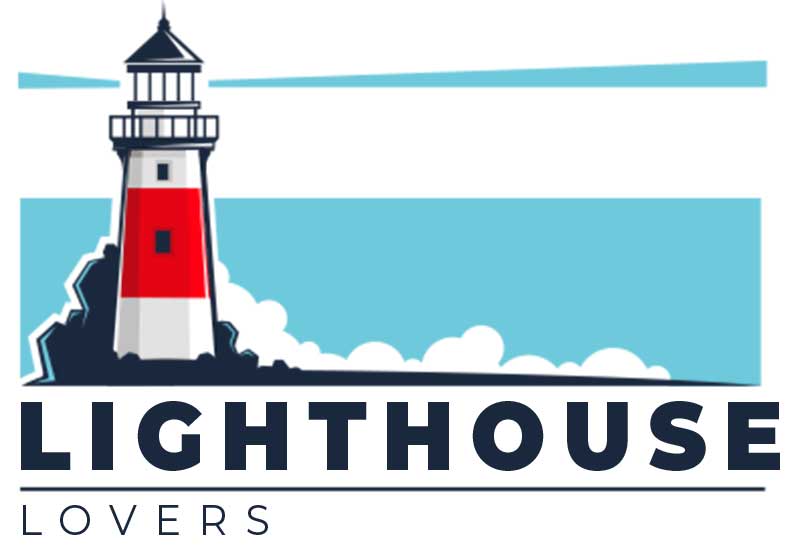Piran Lighthouse
Lighthouse or church? Both!
At first, I guessed it was a church. When I finally realised it was a lighthouse, I took the bell tower for it (as most of the tourists in Piran do, who walk out along the seafront to the tip of the headland). Actually, Slovenia’s only lighthouse is well hidden, and you wouldn’t spot it right away. But it’s worth a visit! The history of the whole building complex, including the bell tower and lighthouse, is fascinating. The coastal town of Piran also is home to two pretty harbour beacons in red and green. If you get the right angle, you can take in all three – just like in my cover picture!
Piran Lighthouse (Piranski svetilnik)
Piran, Slovenia
Gulf of Venice, Adriatic Sea
Visited in April 2025
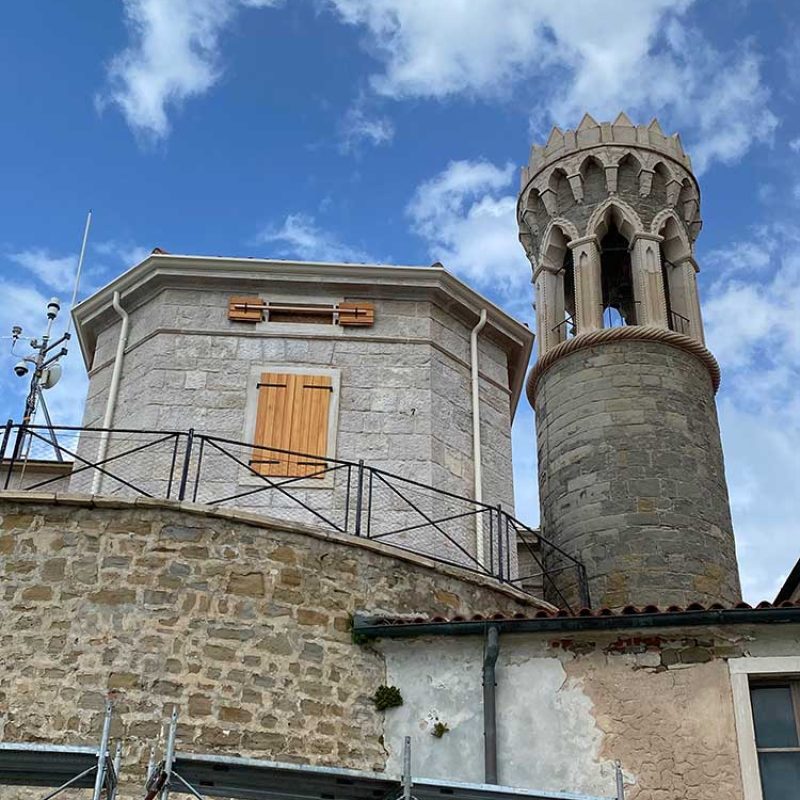
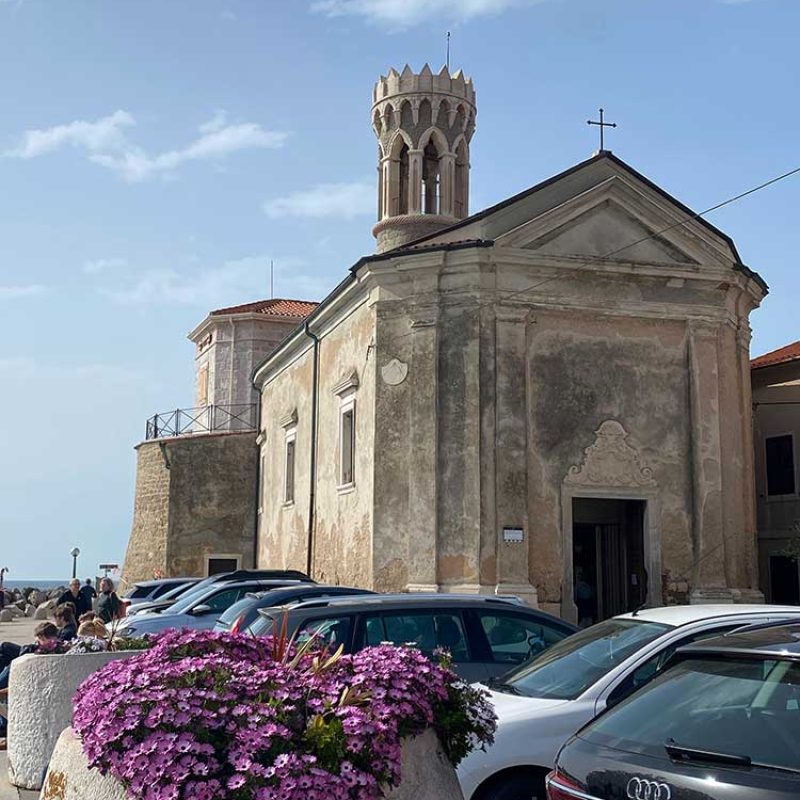



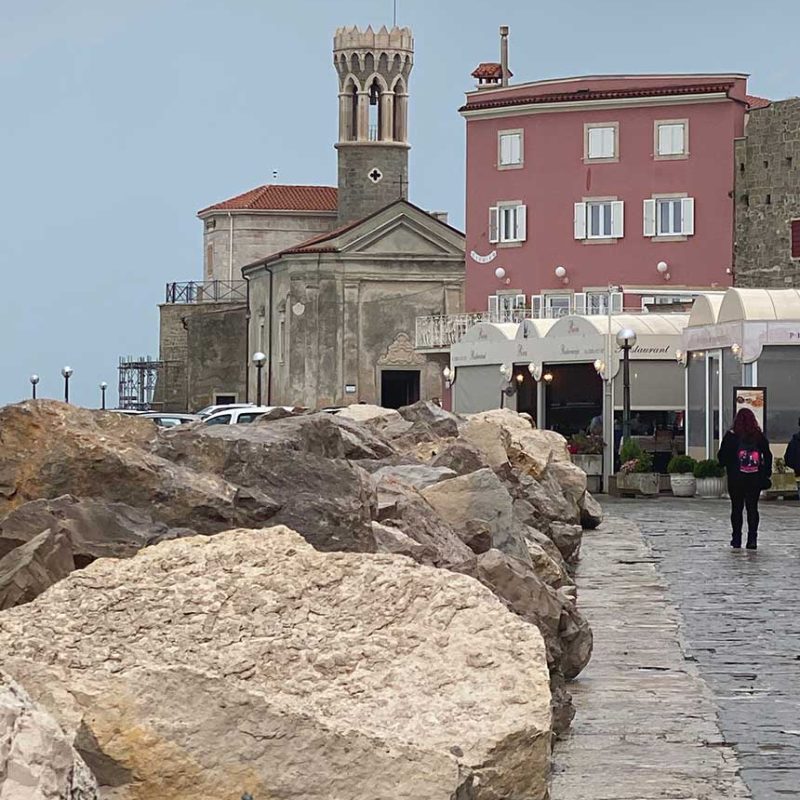
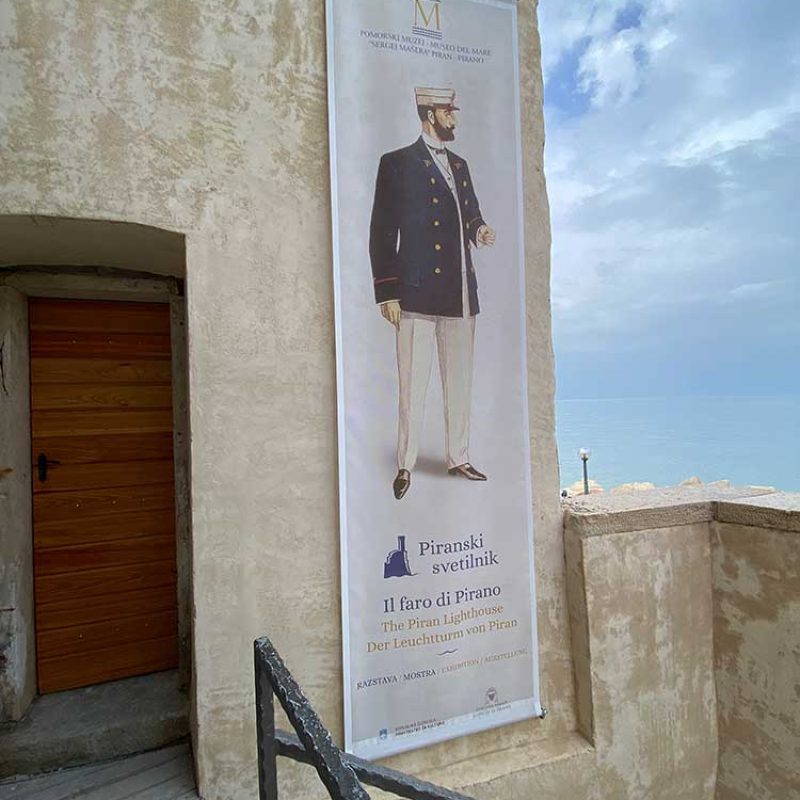
The neo-Gothic bell tower is often mistaken for the lighthouse.
The lighthouse is well hidden though, so it's not easy to spot.
Facts & figures
The Piran lighthouse is the only one in Slovenia. It’s right on the Punta, at the very tip of the promontory where the ancient town on the Slovenian Adriatic coast was built. The lighthouse is one of several buildings that were erected on top of an old fortress, including the lighthouse keeper’s house, a neo-Gothic bell tower, a sacristy and the Baroque Church of Our Lady of Health (also known as St Clement).
Constructed in 1872, the lighthouse is still in operation, but it was automated in 1931.
The lighthouse is tiny and well-hidden behind the larger buildings. That’s probably why so many people get it wrong and think the bell tower is the lighthouse.
When I visited in April 2025, renovations to the exterior of the lighthouse complex were nearing completion.
The lighthouse keeper's dwelling as a museum
Have you ever wondered what life was like for lighthouse keepers and their families? In the coastal town of Piran, you can find out more. Since they automated the lighthouse in 1931, the keeper’s house has been left exactly as it was when they stopped living in it. You can visit it as a museum.
To get to the lighthouse keeper’s flat, go up the stone steps from the street on the north-east side of the building (the exact address is Prešernovo nabrežje 20). The entrance leads into a hallway. This divides the original house into four smaller rooms. These were lived in by the lighthouse keeper’s family.
Unfortunately, the museum inside the lighthouse was closed when we visited in April 2025. It just reopened after we had left. But now you can explore it until 31 October 2025 for a small entrance fee (EUR 1.00 for citizens, EUR 3.00 for other visitors). The opening times vary slightly from month to month, so please check the Maritime Museum’s website before you plan your visit: pomorskimuzej.si/en/the-piran-lighthouse.
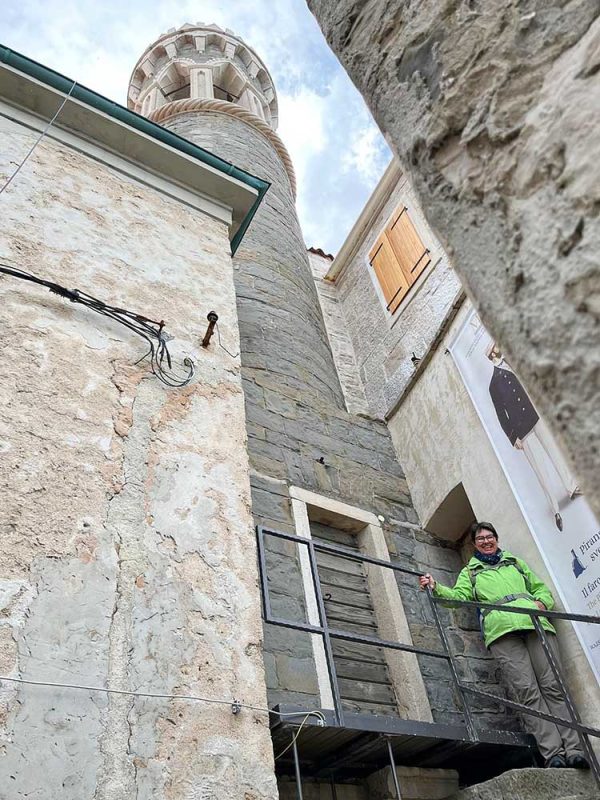
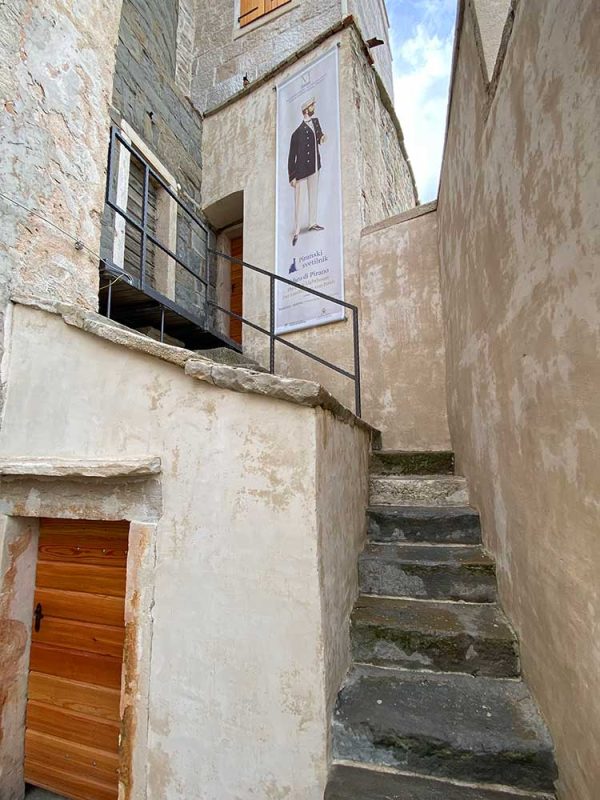
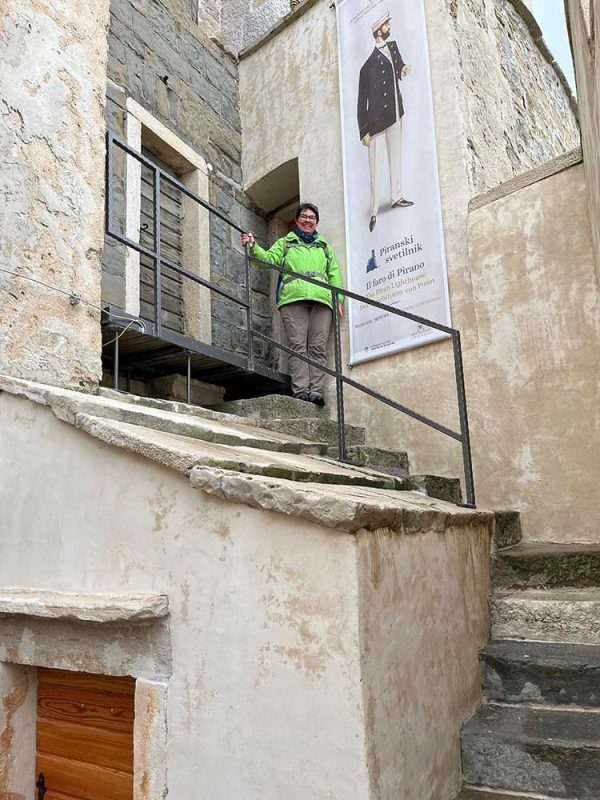
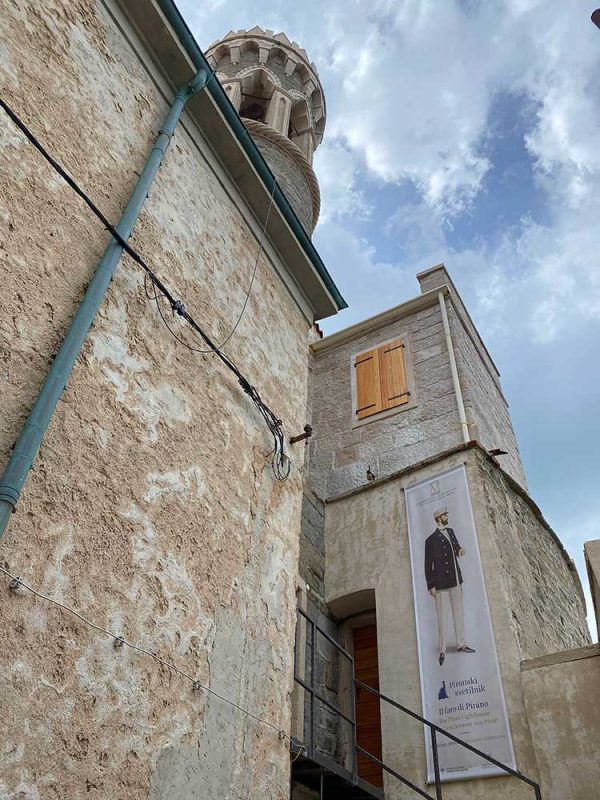
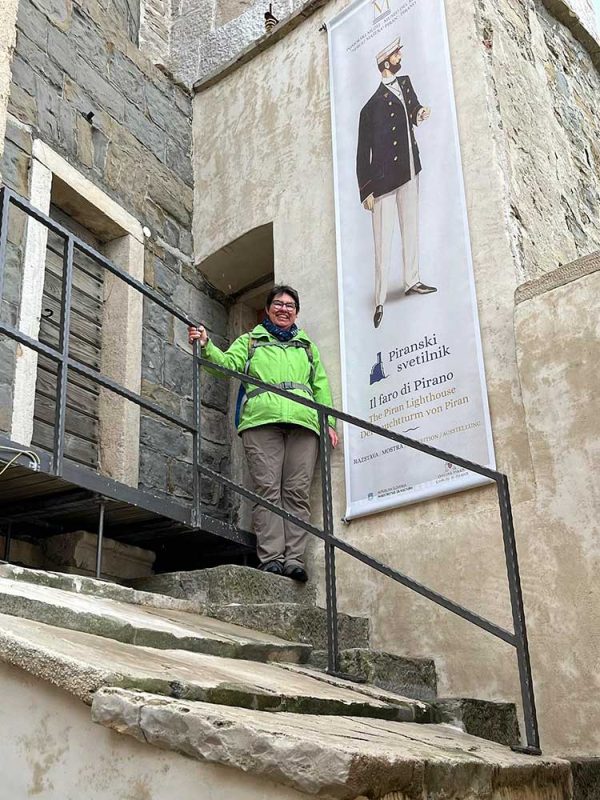
What a disappointment: The museum with the lighthouse keeper's flat was not yet open
when we wanted to visit it.
Lions, pirates and bilingual road signs
What languages are spoken in Slovenia? What does the winged lion on some buildings stand for? Why do you come across so many pirate mural paintings? Here are a few things to know before you plan your visit to Piran!

Piran, which is close to the Italian border in the Gulf of Trieste, has always been influenced by Italian culture. Italian is the second official language here, along with Slovenian. All town signs are therefore bilingual: e.g. Piran (Slovenian) and Pirano (Italian). If you want to visit the Piran lighthouse, look out for the names 'Piranski svetilnik' or 'Faro di Pirano'. As Piran attracts many tourists, the English language here is as common as Slovenian and Italian.
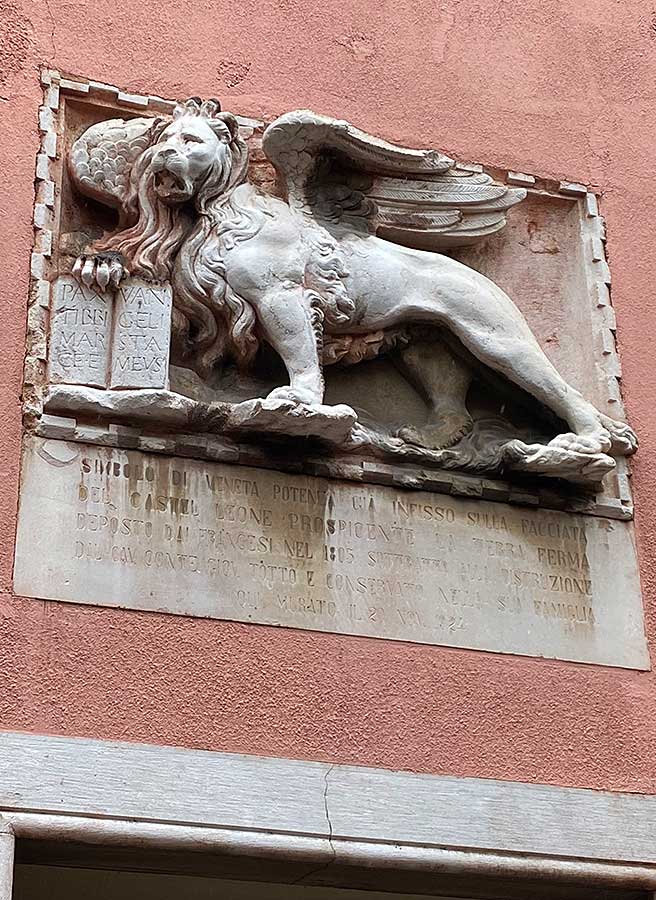
On the Slovenian Riviera the winged Lion of St. Mark can be seen on the front of important buildings again and again. The Republic of Venice placed its emblem on all the lands it took over. The Lion of St Mark is usually shown holding an open book with its right front paw. This meant that the local people had voluntarily given themselves up to the Venetians. A closed book would indicate that they had fought back against their new rulers.
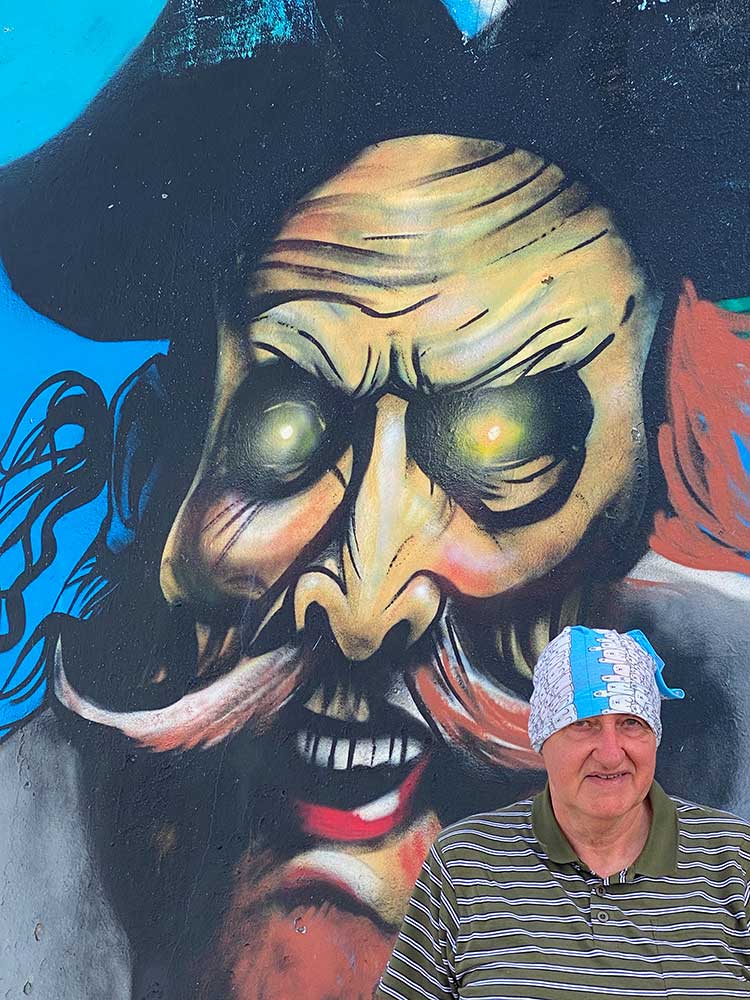
In Piran, you will see murals of pirates (called 'gusari' in Slovenian) everywhere you turn. These are referring to the Muslim privateers who made the Mediterranean a very dangerous place for ships to travel in from the 16th to the 19th century. They set sail from the North African coast, capturing Christian merchant ships and invading coastal towns, taking the population as slaves. Street art that is inspired by the region's maritime history: You can't miss it!
Splashes of colour: red and green lighthouse
In addition to the historic lighthouse dating from 1872, Piran also has two more recent beacons: a red and a green one, located at the entrance to the harbour. If you look at the skyline of Piran from the lookout point at the bus station, the two harbour lights and the neo-Gothic bell tower of the lighthouse complex make for a very appealing view (see cover picture).
You can take a stroll out onto the pier to the red lighthouse, which is a popular spot for anglers. The green lighthouse is not open to the public as it marks the border between Slovenia and the EU for arriving and departing ship passengers.
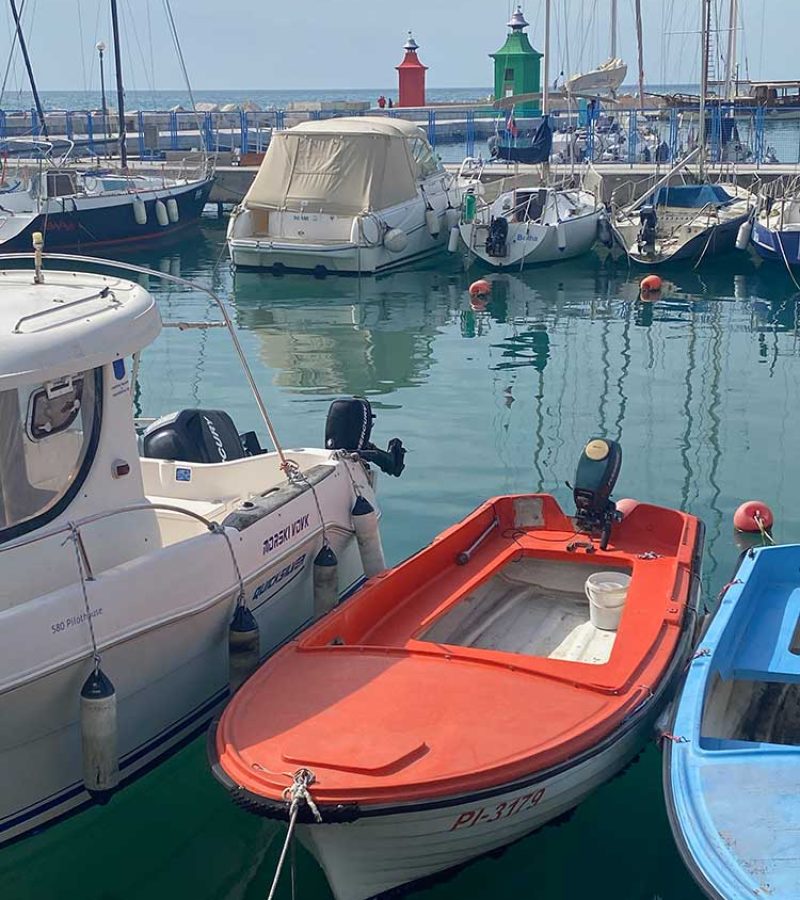
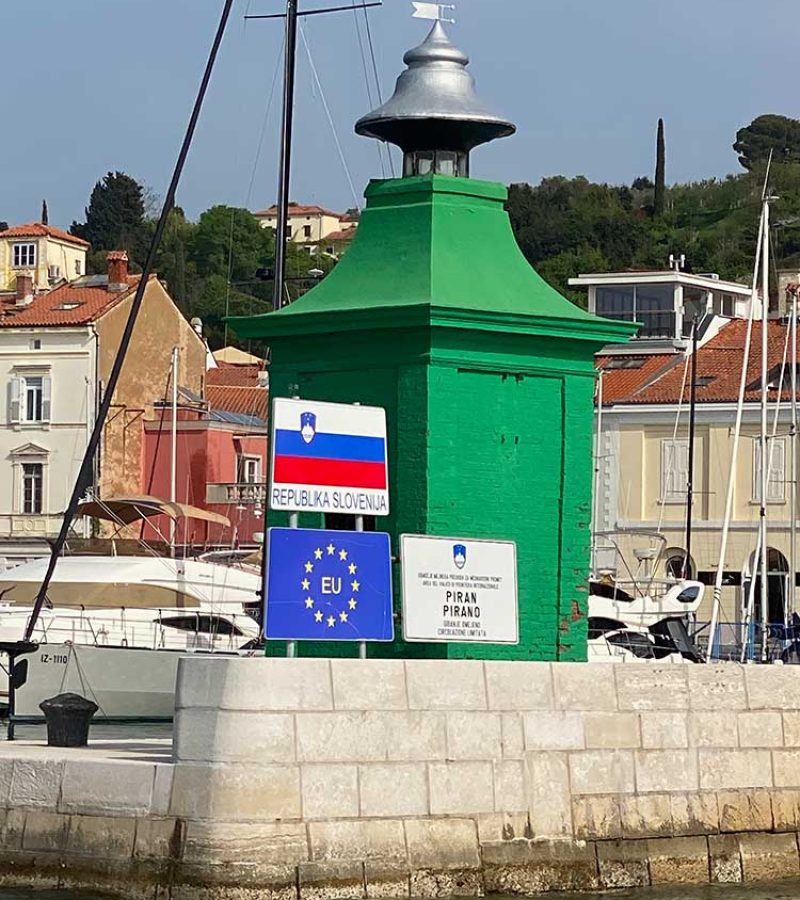
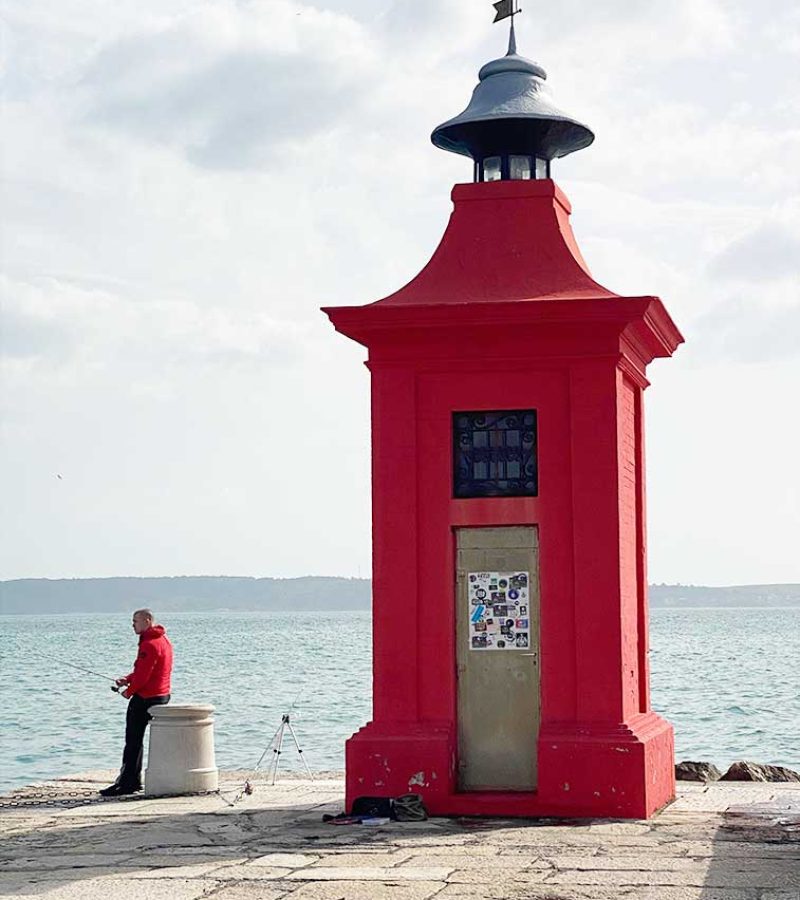


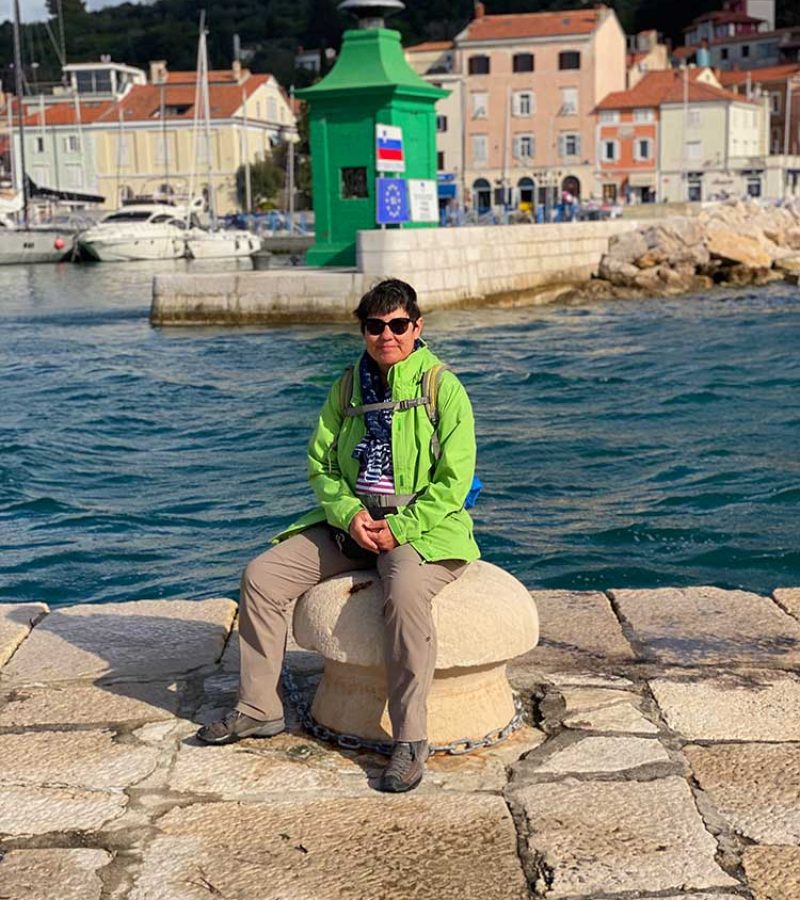
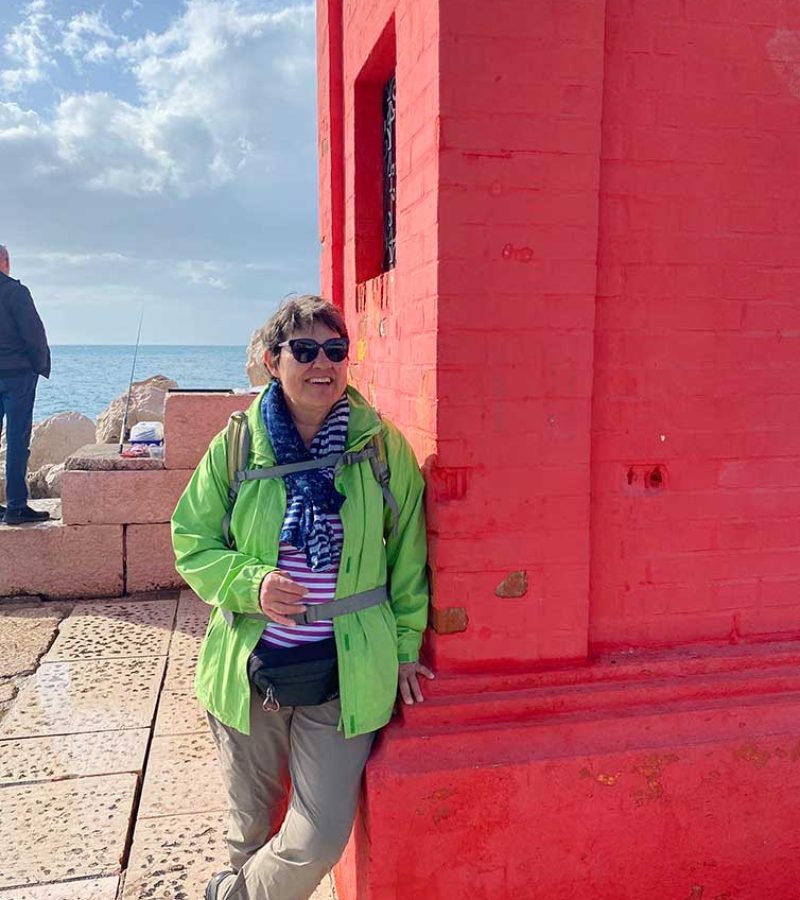
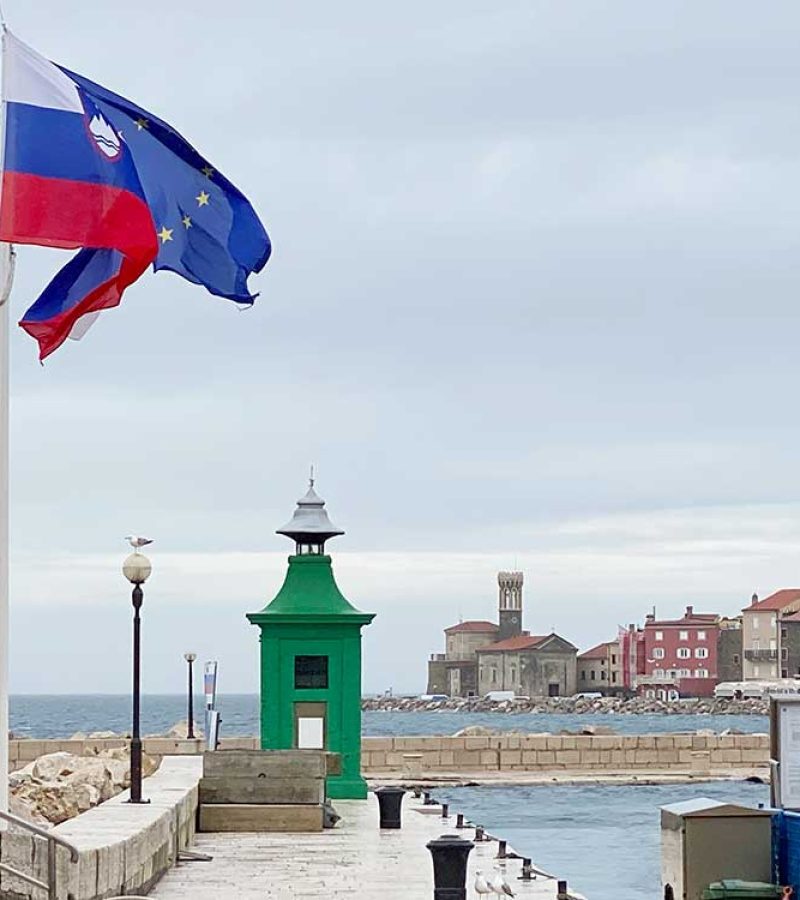
Piran's skyline is dominated by the bell tower at the historic lighthouse and the two green and red harbour lights.
Piran's open-air sculpture park
As you walk out on the promenade to the lighthouse and further on to the beach of Piran, you can discover many exciting sculptures in the stone embankment. The Piran Mermaid is the most striking and the most photographed. Others are harder to spot, as some of them are organically embedded in the rocks. Sea creatures such as dolphins (which you can actually check out in the Bay of Piran!), turtles, crabs, starfish, but also faces of sea gods and free forms are the most common. It’s worth taking a look along the promenade, and not just at the numerous restaurant terraces that line it!
Somehow this open-air sculpture park reminded me of one in a former quarry near the Portland Bill lighthouse. Art and nature in symbiosis. Nowadays it is not only a sculpture park but also a nature reserve. You can read about it in my story Black Dog H(a)unt.
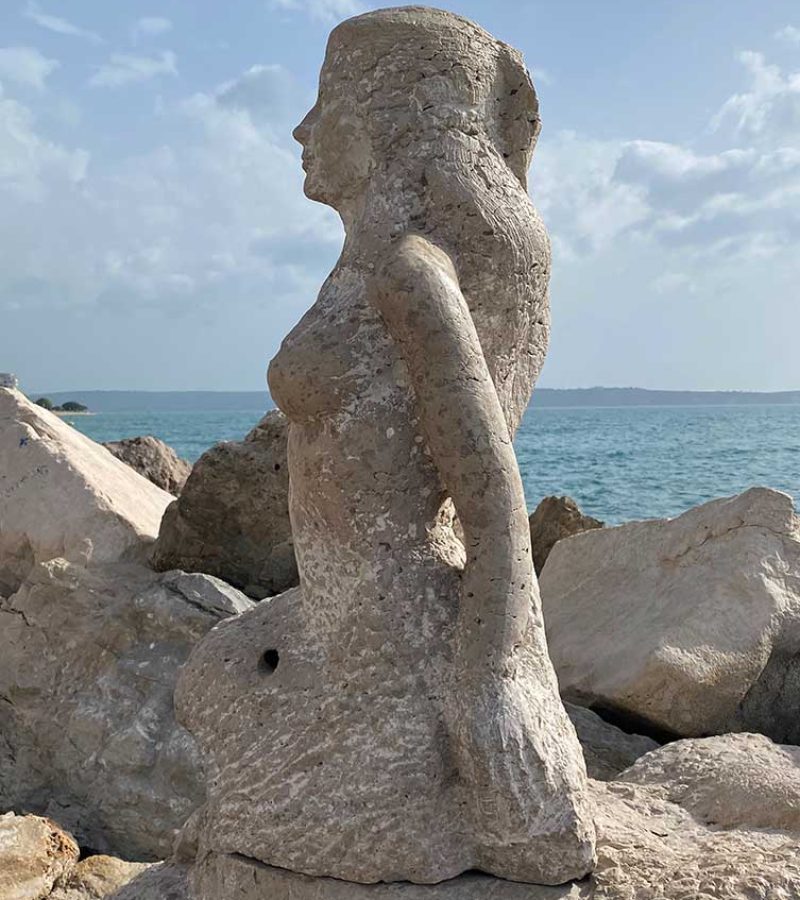

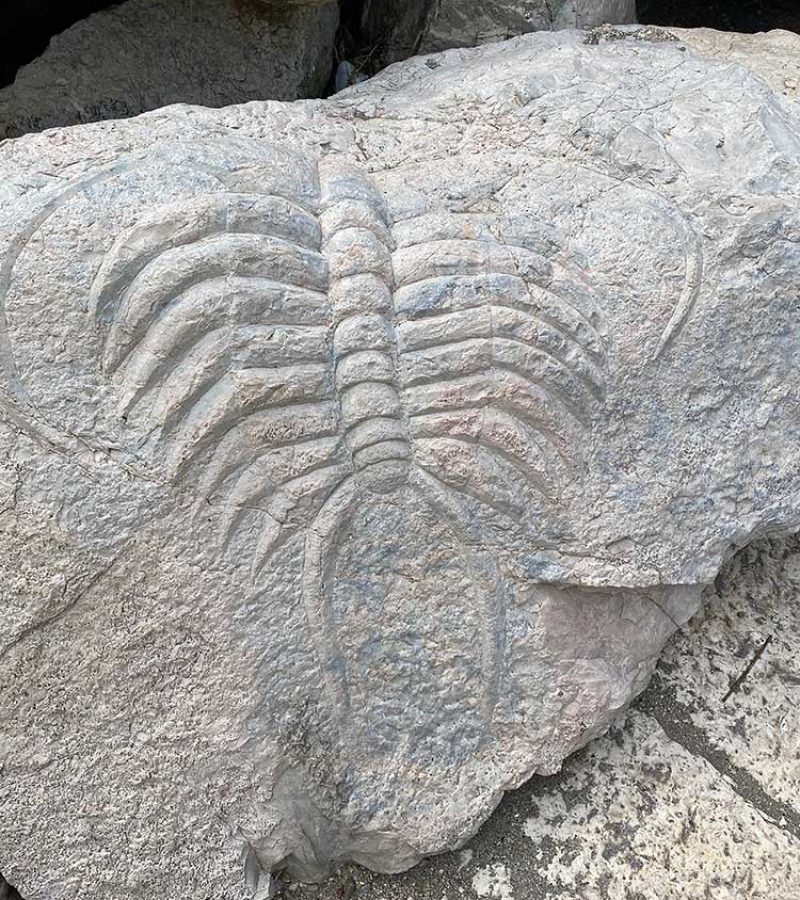
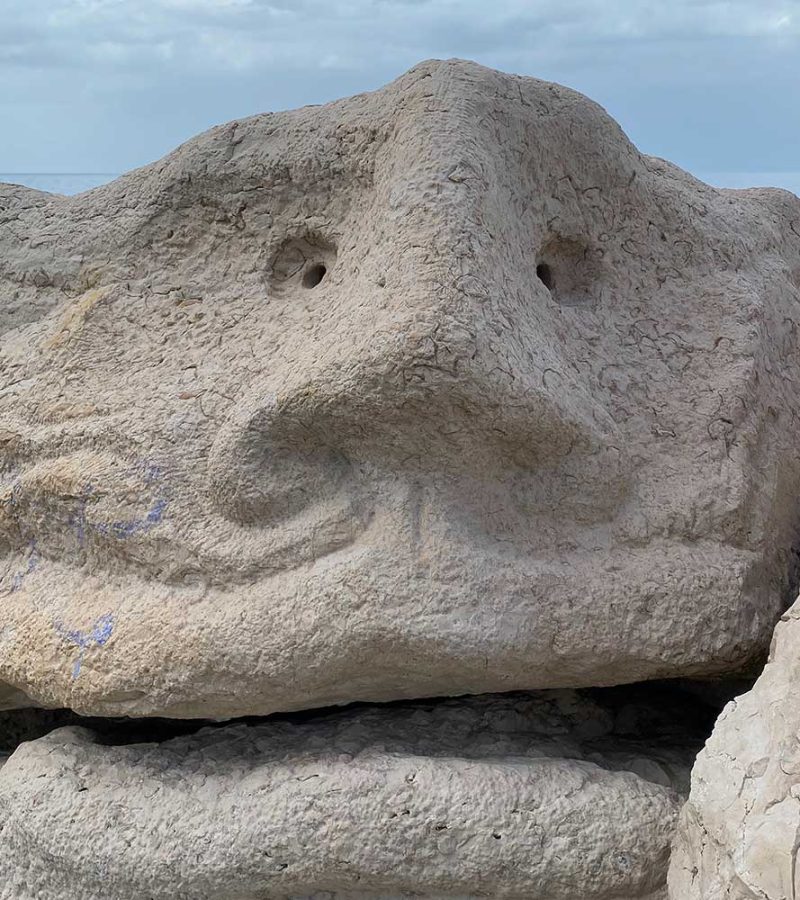


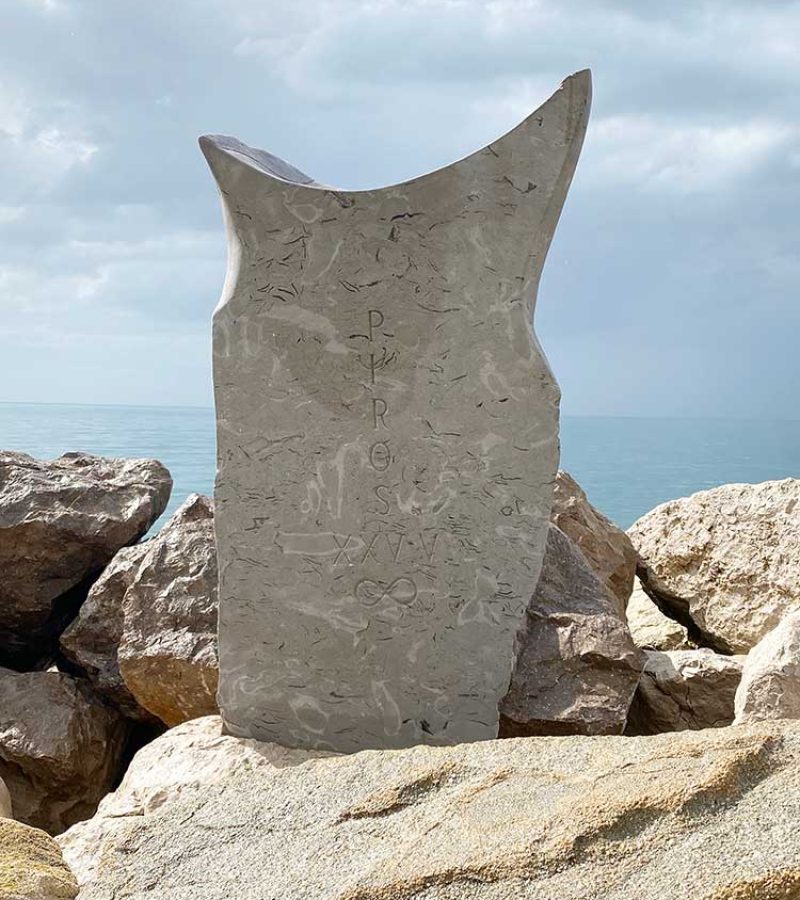

Piran's open-air sculpture park: sea creatures and more.
Dolphin spotting from the restaurant terrace
‘Were those dolphins just now?’ we ask the waitress on the restaurant terrace on the promenade excitedly. Yes, she replies, as if it were the most normal thing in the world. You can spot dolphins in Piran all year round, but you need a bit of luck to catch them. We were very lucky because we got to watch a group of dolphins for at least 15 minutes!
Since 2002, the Morigenos association has been studying and protecting dolphins in the sea off Slovenia. It runs The Dolphin Centre in Piran. In the exhibition, you can learn more about the lives of marine mammals and Morigenos’ research.
The dolphin species that is native to Slovenia is the bottlenose dolphin (Tursiops truncatus). Morigenos researchers have identified over 150 animals based on their different body characteristics and dorsal fins, and they regularly observe 70 of these. Some of them have names like Kai, Emanuela, Daphne, Deinon and Morigenos. If you want to help protect dolphins, you can adopt one.
The bottlenose dolphin is in danger of dying out in the Adriatic. This is caused by sea pollution, too much fishing and a lot of boat traffic.
Visit the Morigenos website now to find out more about the dolphins on the Slovenian coast.
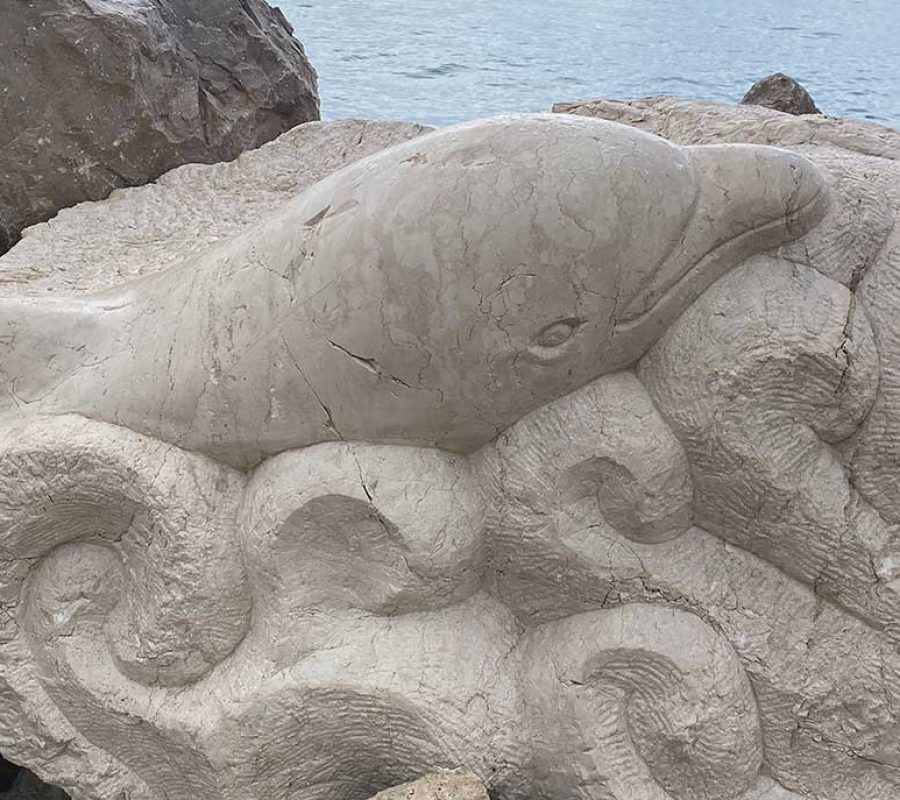
Unfortunately, I wasn't able to take photos of the dolphins since they were too far away.
So here's a picture of a dolphin sculpture from the open-air sculpture park along the promenade of Piran.
You Can't Get enough?
Here you can find some of the other lighthouses that I have visited.
